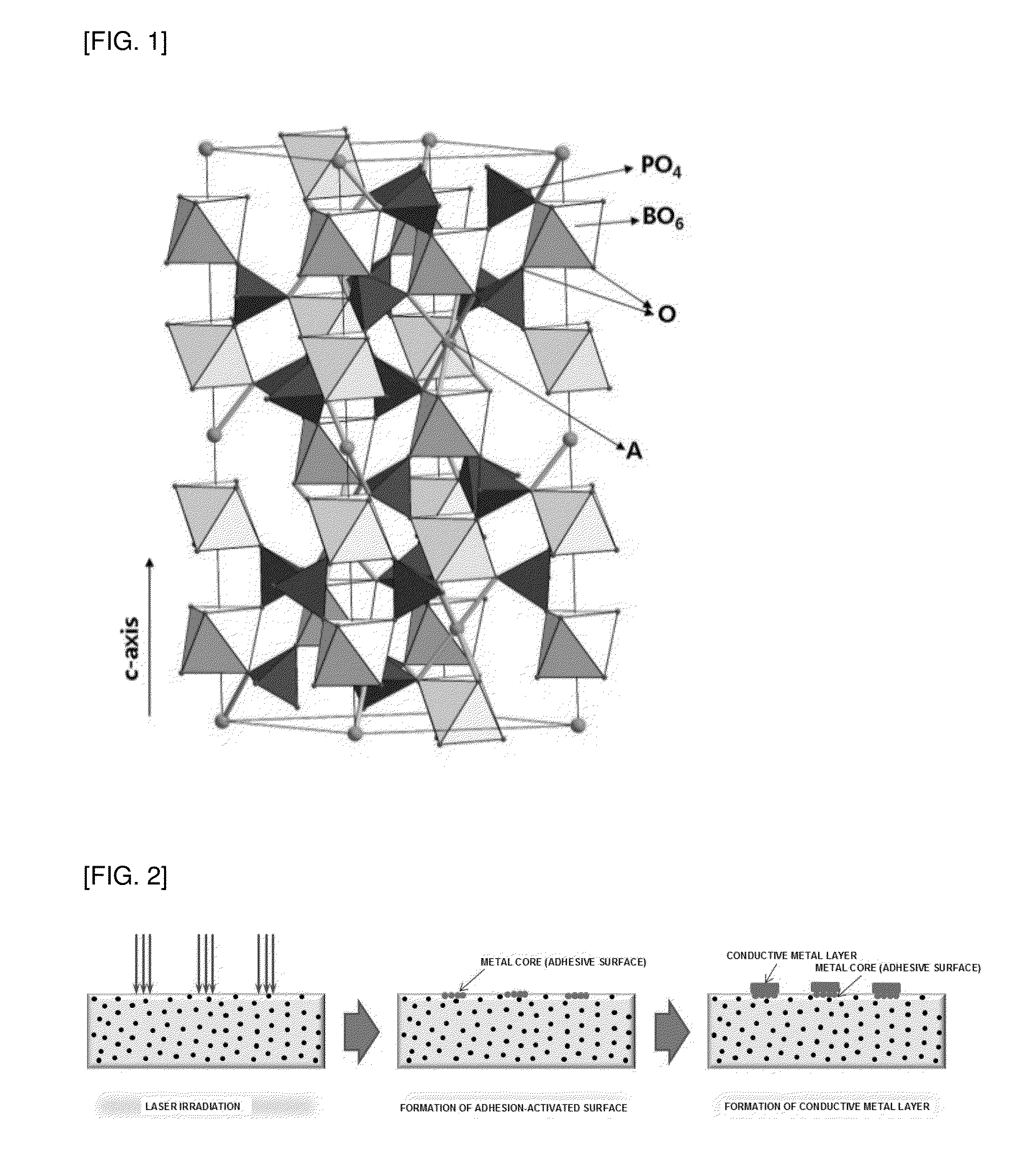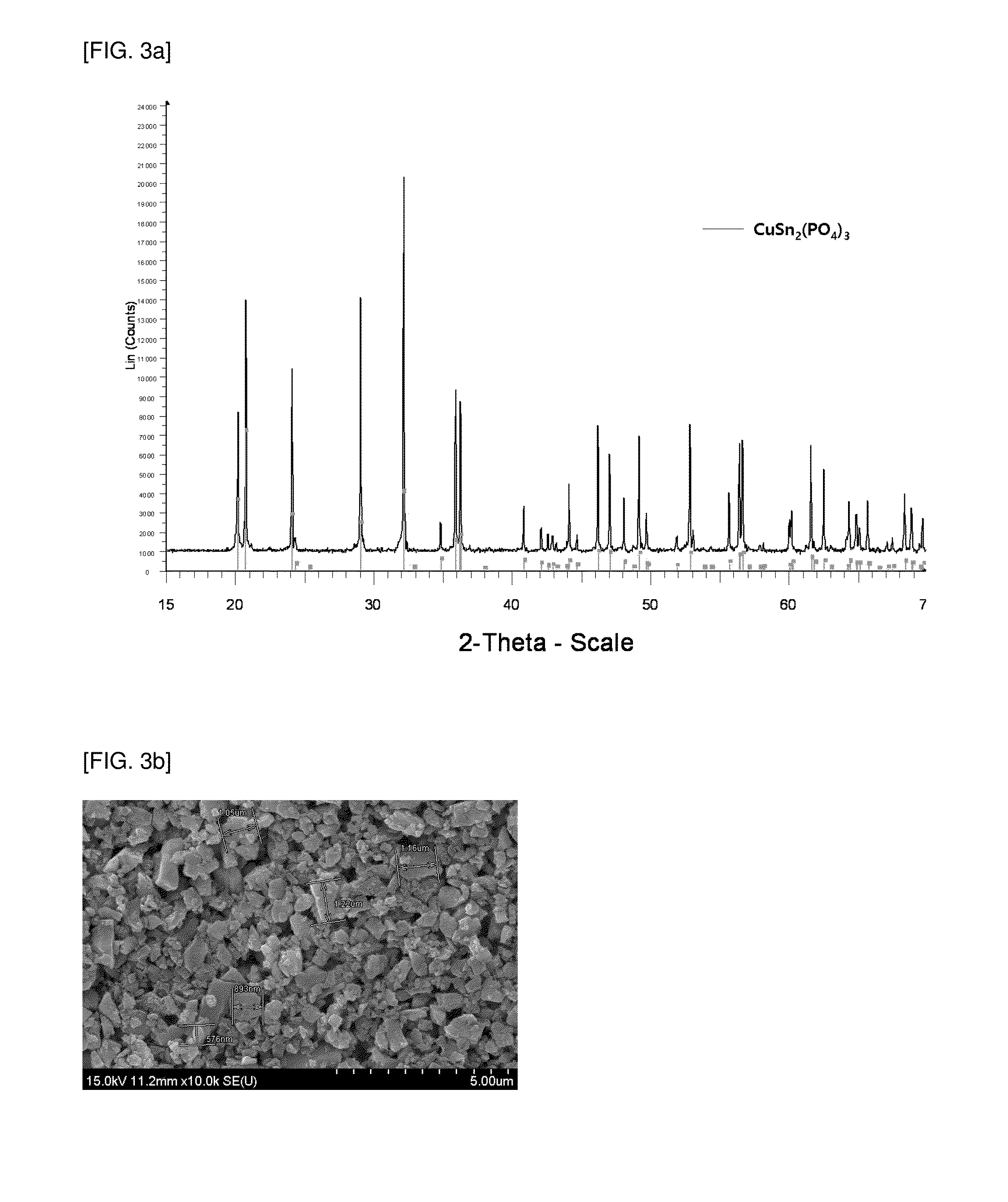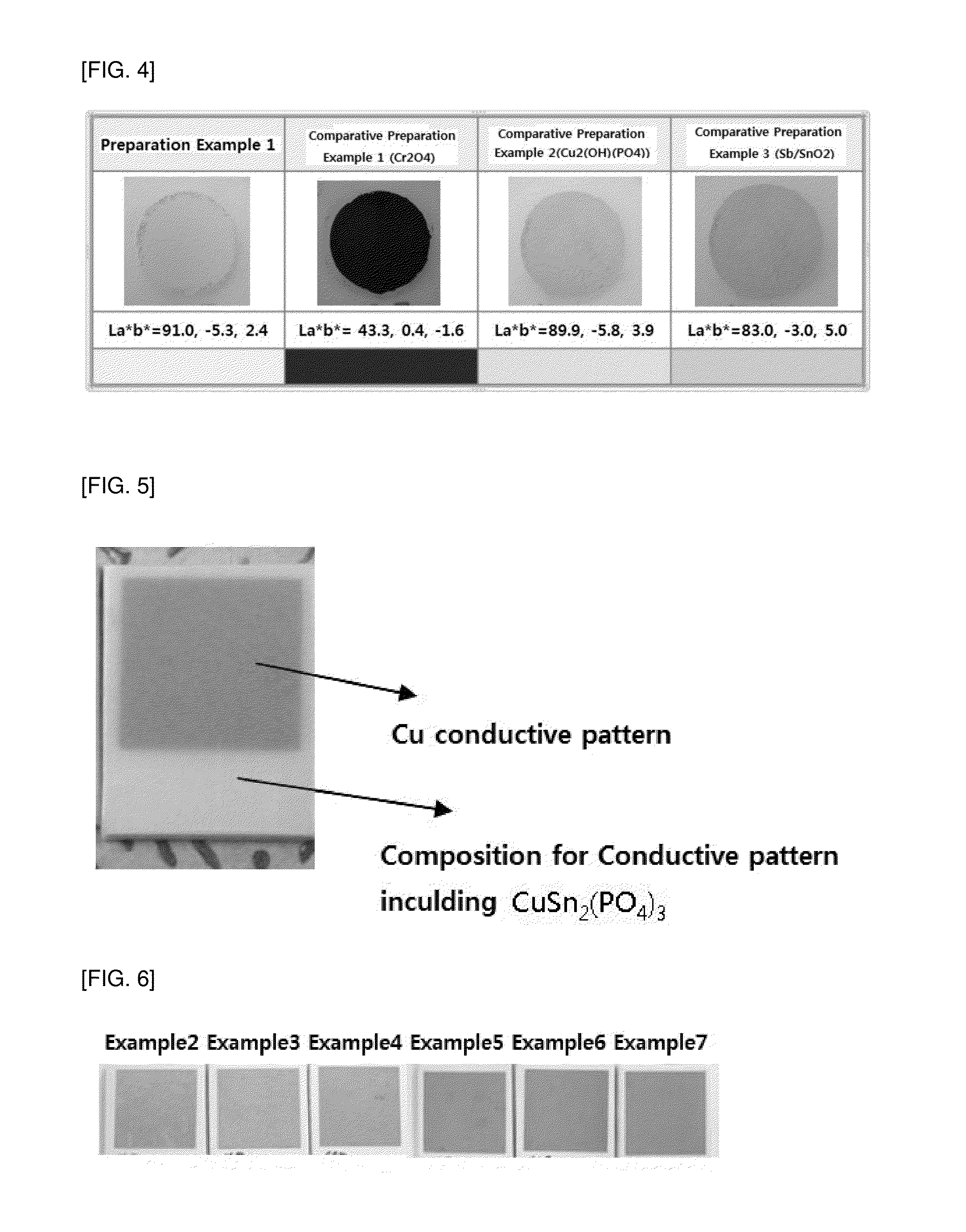Composition for forming conductive pattern and resin structure having conductive pattern thereon
- Summary
- Abstract
- Description
- Claims
- Application Information
AI Technical Summary
Benefits of technology
Problems solved by technology
Method used
Image
Examples
preparation example 1
Synthesis of Non-Conductive Metal Compound CuSn2(PO4)3
[0075]Copper pyrophosphate and tin pyrophosphate were mixed in a stoichiometric ratio, and fired at about 1100° C. for 3 hours, to synthesize a non-conductive metal compound CuSn2(PO4)3 by a solid state reaction.
[0076]The XRD pattern and the electron microscope image of the synthesized compound are shown in FIG. 3a and FIG. 3b. As a result of analysis of XRD structure, it was confirmed that the CuSn2(PO4)3 synthesized in Preparation Example 1 has a NASICON crystal structure.
[0077]According to the standard method of ASTM 2244, using a color coordinate measuring device of X-rite color eye 7000A, CIE Lab color coordinate of Preparation Example 1 was measured, and the measurement result is shown together with the photograph of the non-conductive metal compound of Preparation Example 1 in FIG. 4. As a result of the measurement, it was confirmed that the non-conductive metal compound of Preparation Example 1 has a color coordinate of ...
preparation example 2
Synthesis of Non-Conductive Metal Compound AgSn2(PO4)3
[0078]Silver nitrate, tin chloride and phosphoric acid were mixed in a stoichiometric ratio, and fired at about 900° C. for 2 hours, to synthesize a non-conductive metal compound AgSn2(PO4)3 by a solid state reaction.
[0079]As a result of analysis of XRD structure, it was confirmed that the AgSn2(PO4)3 synthesized in Preparation Example 2 has a NASICON crystal structure.
[0080]According to the standard method of ASTM 2244, using a color coordinate measuring device of X-rite color eye 7000A, CIE Lab color coordinate of Preparation Example 2 was measured. As a result the measurement, it was confirmed that the non-conductive metal compound of Preparation Example 2 has a color coordinate of La*b*=92.01, −3.07, 11.39.
example 1
Formation of Conductive Pattern by Direct Irradiation of Laser
[0083]Using a basic resin of polycarbonate resin, a non-conductive metal compound with NASICON structure of CuSn2(PO4)3(particle diameter: 0.2 to 2 μm) prepared in Preparation Example 1, and additives for a process and stabilization, a composition for forming a conductive pattern by irradiation of an electromagnetic wave was prepared.
[0084]As the additives, a heat stabilizer (IR1076, PEP36), a UV stabilizer (UV329), a lubricant (EP184), and an impact modifier (S2001) were used.
[0085]Based on the polycarbonate resin, 7 wt % of the non-conductive metal compound with NASICON structure, and 5 wt % of the other additives were mixed to obtain a composition, which was then extruded through an extruder at a temperature of 260 to 280° C. The composition in the form of an extruded pellet was injection molded into a substrate with a diameter of 100 mm and thickness of 2 mm and an izod bar according to ASTM standard at about 260 to 2...
PUM
| Property | Measurement | Unit |
|---|---|---|
| Force | aaaaa | aaaaa |
| Lattice constant | aaaaa | aaaaa |
| Impact strength | aaaaa | aaaaa |
Abstract
Description
Claims
Application Information
 Login to View More
Login to View More - R&D Engineer
- R&D Manager
- IP Professional
- Industry Leading Data Capabilities
- Powerful AI technology
- Patent DNA Extraction
Browse by: Latest US Patents, China's latest patents, Technical Efficacy Thesaurus, Application Domain, Technology Topic, Popular Technical Reports.
© 2024 PatSnap. All rights reserved.Legal|Privacy policy|Modern Slavery Act Transparency Statement|Sitemap|About US| Contact US: help@patsnap.com










